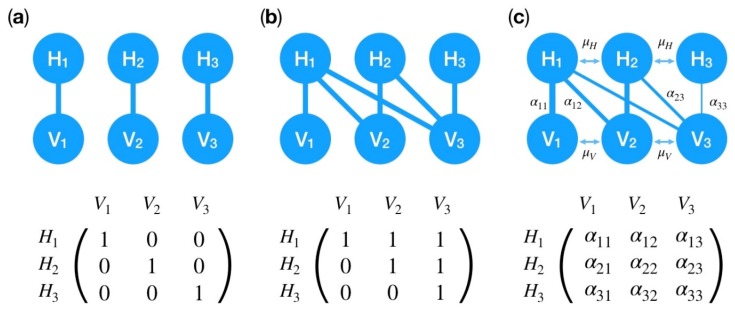Figure 2.
Overview of possible types of coevolutionary interactions between host genotypes (Hi) and virus genotypes (Vj). The top row shows a graphical representation of potential interactions between different host and parasite genotypes. Lines indicate that a virus with genotype j can infect a host with genotype i. The corresponding infection matrices are shown in the bottom line. Entries in the infection matrix which are equal to 0 (1) indicate that the host genotype in row i is fully resistant (susceptible) to the virus genotype in column j. (a) In a matching-allele system each virus genotype can successfully infect only one host genotype. (b) In gene-for-gene systems there is one universally infective virus genotype (here V3) which is able to infect all host genotypes. Most coevolutionary interactions fall onto a continuum between these two extremes and can be captured in a correspondingly parameterized infection matrix as illustrated in (c). αij reflects the rate of success for virus genotype j to infect host genotype i. Every αij can take values between 0 and 1. Genotype-altering mutations happen at rate µH in the host and µP in the parasite.

